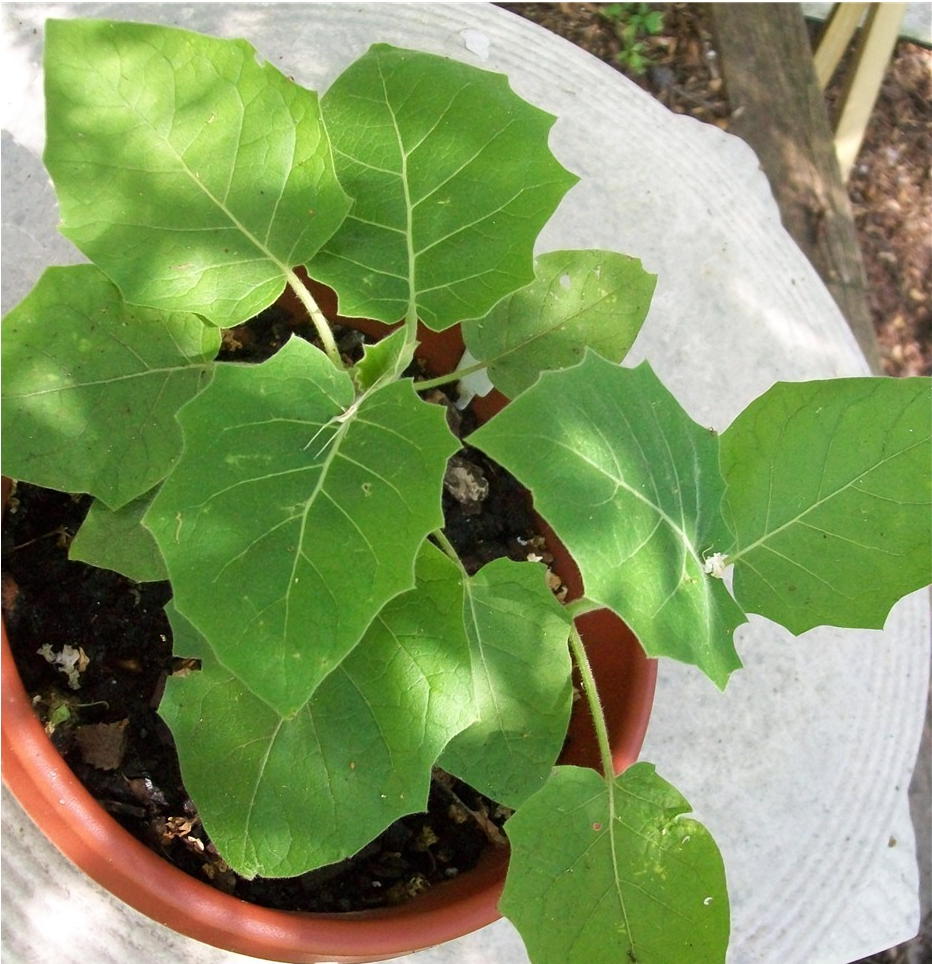Solanum sessiliflorum on:
[Wikipedia]
[Google]
[Amazon]
''Solanum sessiliflorum'', the cocona, is a tropical shrub of the family 
''Solanum sessiliflorum''
Version of December 2005. Retrieved 2008-SEP-25.
sessiliflorum Edible Solanaceae Tropical fruit Flora of South America {{Solanales-stub
Solanaceae
The Solanaceae , or nightshades, are a family of flowering plants that ranges from annual and perennial herbs to vines, lianas, epiphytes, shrubs, and trees, and includes a number of agricultural crops, medicinal plants, spices, weeds, and orn ...
. The cocona plant has sturdy branches and huge, serrate and hairy leaves. Cocona closely resembles a number of close relatives, including naranjilla
''Solanum quitoense'', known as naranjilla (, "little orange") in Ecuador, Costa Rica, and Panama and as lulo (, from Quechua) in Colombia, is a tropical perennial plant from northwestern South America. The specific name for this species of nigh ...
and pseudolulo. It can be distinguished from those plants by its lack of spines. It will hybridize with those and other close relatives. Cocona also lacks the characteristic purple coloring usually seen in the naranjilla. Its flowers resemble large potato flowers, with light green petals. Cocona is harvested in parts of South America around the Amazon rainforest
The Amazon rainforest, Amazon jungle or ; es, Selva amazónica, , or usually ; french: Forêt amazonienne; nl, Amazoneregenwoud. In English, the names are sometimes capitalized further, as Amazon Rainforest, Amazon Forest, or Amazon Jungle. ...
such as Purús Province
Purús Province is one of four provinces in the Ucayali Region, in the central Amazon rainforest of Peru. The Purus River runs through it.
The province is conformed by a single district ( es, distrito, links=no), Purús District, whose capital is ...
in eastern Peru. :es:Palestina (Perú)
The fruit of cocona is a red, orange or yellow edible berry
A berry is a small, pulpy, and often edible fruit. Typically, berries are juicy, rounded, brightly colored, sweet, sour or tart, and do not have a stone or pit, although many pips or seeds may be present. Common examples are strawberries, raspb ...
. Cocona is native to the Andean region of South America, where it is occasionally cultivated for human consumption.
Cocona can also be grown as an indoor ornamental plant
Ornamental plants or garden plants are plants that are primarily grown for their beauty but also for qualities such as scent or how they shape physical space. Many flowering plants and garden varieties tend to be specially bred cultivars that i ...
in temperate climates, but it seems to be quite sensitive to spider mite
Spider mites are members of the Tetranychidae family, which includes about 1,200 species. They are part of the subclass Acari (mites). Spider mites generally live on the undersides of leaves of plants, where they may spin protective silk webs, a ...
s, so care should be taken not to keep it in too dry air during winter. Like the naranjilla, coconas are highly sensitive to aphids
Aphids are small sap-sucking insects and members of the superfamily Aphidoidea. Common names include greenfly and blackfly, although individuals within a species can vary widely in color. The group includes the fluffy white woolly aphids. A t ...
and nematodes. As subtropical plants, they can endure cool weather, but will be killed or severely damaged by frost. During summer, it can be grown outside or in a cold greenhouse. When grown from seed, coconas can bear fruit in as little as 9 months, or as long as 24.
''Solanum georgicum
''Solanum'' is a large and diverse genus of flowering plants, which include three food crops of high economic importance: the potato, the tomato and the eggplant (aubergine, brinjal). It is the largest genus in the nightshade family Solanaceae ...
'' and ''Solanum hyporhodium
''Solanum'' is a large and diverse genus of flowering plants, which include three food crops of high economic importance: the potato, the tomato and the eggplant (aubergine, brinjal). It is the largest genus in the nightshade family Solanaceae ...
'' were (and sometimes still are) included in this species, but they are generally treated as distinct today.

References
Footnotes
* (2005)''Solanum sessiliflorum''
Version of December 2005. Retrieved 2008-SEP-25.
External links
sessiliflorum Edible Solanaceae Tropical fruit Flora of South America {{Solanales-stub